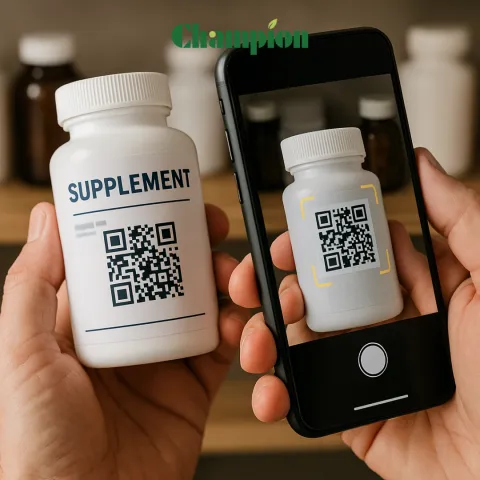Blog
05.May.2025
Entering the Asian Market? Here's What Nutraceutical Brands Need to Know
Breaking into Southeast Asia’s Booming Nutraceutical Market: What Global Brands Must Know
The global nutraceutical industry is experiencing record-breaking growth—but few regions are as dynamic and promising as Southeast Asia (SEA).From Vietnam to Indonesia, the region is undergoing a wellness awakening, driven by rising incomes, health awareness, and a cultural openness to both modern and traditional remedies.
But for global supplement brands looking to expand into this high-potential territory, success requires more than just product translation or labeling updates. It requires a nuanced understanding of regulation, culture, and buying behavior.
At Champion, we help brands across the U.S., Europe, and Asia navigate the complexity of SEA market entry through regulatory strategy, localized formulation, and end-to-end OEM/ODM support.
In this guide, we’ll explore:
- Why Southeast Asia represents a major growth opportunity
- The top 3 barriers (and how to overcome them)
- How to position your brand and product for SEA success
Why Southeast Asia?
The SEA nutraceutical market—which includes countries like Indonesia, Malaysia, the Philippines, Vietnam, Thailand, and Singapore—is expected to grow at a CAGR of over 9.5% through 2030. That’s faster than most Western regions.Key Growth Drivers:
- 🌏 A growing middle class with increasing health awareness
- 🧓 Aging populations in countries like Thailand and Vietnam
- 🧃 A cultural preference for natural remedies and functional foods
- 📲 High digital engagement and mobile-first behavior
- Immunity and respiratory health (especially post-COVID)
- Digestive and gut support
- Skin health and beauty-from-within
- Cognitive and energy enhancement
- Weight management and metabolic wellness
The SEA Opportunity: Market Snapshot by Country
- Malaysia : High supplement awarenessStrong digital buying behavior
- Philippines: Fastest-growing DTC channelEnglish packaging often accepted
- Thailand: Popular for beauty-from-within & weight lossSupplements often sold in pharmacies
- Vietnam: Growing interest in imported brandsRegulatory delays are common
- Singapore: High purchasing power & innovation adoptionEntry point for ASEAN but highly regulated
3 Key Insights for Market Entry
Breaking into SEA is not just about showing up with a “clean label.” Brands that succeed understand these three critical factors:1. 🧾 Regulatory Compliance Varies by Country
The biggest pitfall for Western supplement brands? Assuming ASEAN harmonization.While the ASEAN region has made efforts to streamline regulations, each country still maintains its own authority, processes, and ingredient lists.
For example:
- Indonesia’s BPOM has strict guidelines on both approved ingredients and dosage limits—and requires Halal certification.
- Singapore’s HSA bans many commonly used ingredients in the U.S. and EU (e.g., certain adaptogens and botanicals).
- Malaysia’s NPRA is relatively flexible but requires local representation and proper notification.
Key Regulatory Challenges:
- Ingredient registration and approval delays
- Restrictions on common health claims
- Required documentation (COAs, stability data, Halal/organic certs)
- Foreign manufacturer ISO 22000 and FSSC 22000 validation
Champion’s Solution:
We offer supports that tailored to each market
✅ Result: Faster product registration and fewer unexpected delays.
2. 🍵 Cultural Familiarity Matters—Ingredients Must Resonate
While collagen, probiotics, and adaptogens are popular worldwide, SEA consumers still place strong trust in local and traditional ingredients—especially when presented through modern formulations.Popular Botanical Ingredients in SEA:
- Turmeric (Curcuma longa) – Used in traditional Jamu medicine in Indonesia
- Ginseng – Common in Malaysia and Vietnam, associated with vitality
- Mangosteen – Local antioxidant powerhouse
- Tongkat Ali (Eurycoma longifolia) – Popular for male vitality and energy
- Centella Asiatica (Gotu Kola) – Prominent in Thai skin health and healing traditions
- Connect culturally with their target audience
- Support traditional knowledge with modern science
- Gain trust more easily—especially in products for elders or children
Champion’s Approach:
We help brands localize their formulations, either by:- Substituting unfamiliar ingredients with culturally relevant ones
- Enhancing traditional ingredients with science-backed claims
- Adjusting delivery formats (e.g., sachets over capsules)
3. 📱 Digital-First Behavior Defines the Buyer Journey
SEA consumers—especially in Malaysia, the Philippines, and Indonesia—are digitally native and mobile-first. Over 75% of consumers research health products online before purchase, even if they complete the sale offline.Key behaviors include:
- Comparing multiple supplement brands on social media
- Watching product reviews or unboxings on YouTube or TikTok
- Engaging with health influencers or herbal medicine content
- Checking for Halal or organic certifications
Implications for Brands:
- Your website, packaging, and ad content must educate and convert digitally.
- Localized language + social proof are essential.
- Products must be optimized for e-commerce and comply with platforms like Shopee, Lazada, and Tiki.vn.
Champion’s Strategy:
We help you build your roadmap that includes:- Claims that align with trending health needs
- Packaging that fits both modern and traditional expectations
Top Product Categories Gaining Traction
SEA is not a monolith—but across the region, several product types are consistently gaining ground:- Immunity & Respiratory Health: Post-COVID awareness remains high
- Beauty-from-WithinSkin: brightening and collagen dominate among women 25–45
- Digestive Health: Gut and immunity correlation is well-understood
- Brain & Energy: Young professionals and students seek focus support
- Weight & Metabolic Health: Urbanization leads to more lifestyle-related health issues
How Champion Helps Global Brands Win in Southeast Asia
We’re not just a manufacturer—we’re a partner with regional insights, local connections, and a track record of helping brands scale into SEA successfully.Our Full-Service Support Includes:
- 🌿 Ingredient customization and replacement based on cultural fit
- 🧪 Regulatory consulting tailored to each country
- 🛍️ Packaging, labeling, and flavor adaptation
- 🏭 OEM/ODM manufacturing
- 📄 Documentation for Halal, vegan, or clean-label certification
Final Thoughts: The Time to Enter Southeast Asia Is Now
SEA is a complex but high-reward region for health and wellness brands. If you’re ready to scale globally, this is where growth will come from.But you’ll need:
- A product that fits local values and health priorities
- Clear regulatory navigation
- Localized positioning and packaging
- A manufacturing partner who understands both East and West
Let’s build supplements that don’t just enter new markets—but thrive in them.
📩 Contact us today to explore your next opportunity in Southeast Asia.



















